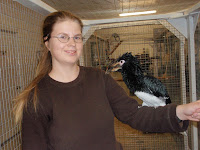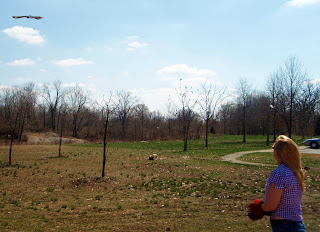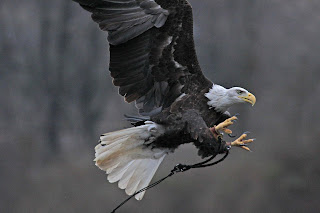Have you ever been on vacation with someone whose passion is nature photography?
A photographer's spouse becomes very adept at finding roadside pullouts - Rialto Beach - Olympic Peninsula, Washington
Ask anyone who is wed to a wildlife photographer, and they will tell you that while driving down the road there is a special brand of insanity that seizes their nature photographer spouse—especially while on vacation.
Aspens - Henry's Lake - Idaho
I have to admit it—I’ve been severely afflicted! We’ve trained our spouses to stop on a dime when we yell “STOP!” because we’ve spotted just the right stand of Aspen trees. They’ve become very adept at gauging just how far they can go to get to a safe pullout spot before we completely lose it because the shot was “back there”—not a quarter of a mile down the road.
A New Zealand Pigeon - one of the many places I have been seriously"stuck" - Wenderholm NR, North Island, NZ
Photographers’ spouses deserve a special award for patience. You see, one of the symptoms of this malady is that we get “stuck” while on a hike. “Stuck”, is the term my husband coined in New Zealand to describe how a 20 minute hike can turn into 2 hours (or more). It goes something like this: Take 20 steps…stop and listen for the bird we hear singing loudly….take five minutes to find said bird in the treetops….Identify bird….take 30 or 40 photos of bird….walk about 10 steps….oops, this is a better angle….take 30 or 40 more photos….walk quickly to catch up with spouse, who by now has walked on….hear another bird (well, you get the picture).
Sometimes you just have to get into the right position - Yellowstone National Park
Not only do photographers’ spouses need patience, but they need to develop a thick skin. This comes in handy when the photographer is belly down in the sand (or dirt, or boardwalk) to get just the right angle for a shot. The thick skin part kicks in when he begins to hear other people snickering at the sight of a grown woman in such a position.
I don't know the lunatic lying in the middle of the boardwalk - Cape Flattery Trail, WA
Of course, if he’s lived with the photographer’s idiosyncrasies for a very long time, he’s probably perfected the fine art of nonchalantly walking on and pretending he doesn’t know the lunatic lying in the middle of the hiking trail or boardwalk.
To get a really good shot you have to photograph from the subject's eye level if possible - Francis Biedler Forest, South Carolina
The other prerequisite for a photographer’s spouse is a knowledge of first aid. This point was driven home to me this summer in Yellowstone. Each day as we made our way from Montana to the West Yellowstone entrance of the park we spotted a lone Trumpeter Swan at a distance, always in the same place in the river that parallels the road. Perhaps it had claimed this bend of the river as it’s territory—or perhaps it had a mate and a nest nearby, but whatever the reason it was always in the same area. There was no safe pullout point on this road near where the Swan was seen, so we passed it five times without stopping. As we were leaving the park for the last time I just couldn’t stand it any more. I told my husband that if the bird was there again he needed to stop at the nearest pullout point and I would hike back to get a photo. I knew I could do this without invading the bird's comfort zone since I had a newly purchased long lens and had been scoping out the terrain as we passed it each time.
My long-suffering spouse dutifully stopped at the first safe spot, and I got out and began hiking down a narrow Bison trail that paralleled the river As I passed two fly fishermen with my eyes firmly fixed on my quarry, carrying a camera and lens about the size of a mini bazooka (or so it seemed), I stepped in a hole and went sprawling face first into the Bison trail. As the two fishermen came running to see if I was OK, they heard me babbling about whether my camera and lens were OK—never mind the blood dripping from the small cut on my forehead, the scratched glasses, or the rocks embedded in my palm. After mentally calculating the date of my last tetanus shot I assured them that “….really I’m OK”, and “…No thank you I don’t need to be escorted back to my vehicle”, I again proceeded along the path in pursuit of the Swan, leaving the fishermen shaking their heads. The Swan was still a very long distance away. By the time I found a spot to take the photo, not only was I somewhat shaky from my fall, but the wind had picked up and was gusting enough that it made a steady shot almost impossible, but by now I was determined that even if it was a white blob I was going to get the photo.

Trumpeter Swan photo (such as it is) - Gallatin River near West Yellowstone
Needless to say, I had a lot of ‘splainin to do (as Ricky Ricardo would have said in the old "I Love Lucy" TV show) when I appeared back at the vehicle in less that pristine condition to a chorus from my family of “What happened to YOU?”
If you enjoy wildlife photography, but would prefer to pursue it without resorting to the above mentioned antics, you can visit us at the World Bird Sanctuary 363 days of the year for much more easily obtained and close-up photos of our birds. Your spouse will thank you.
Submitted by Gay Schroer, World Bird Sanctuary Volunteer

















































